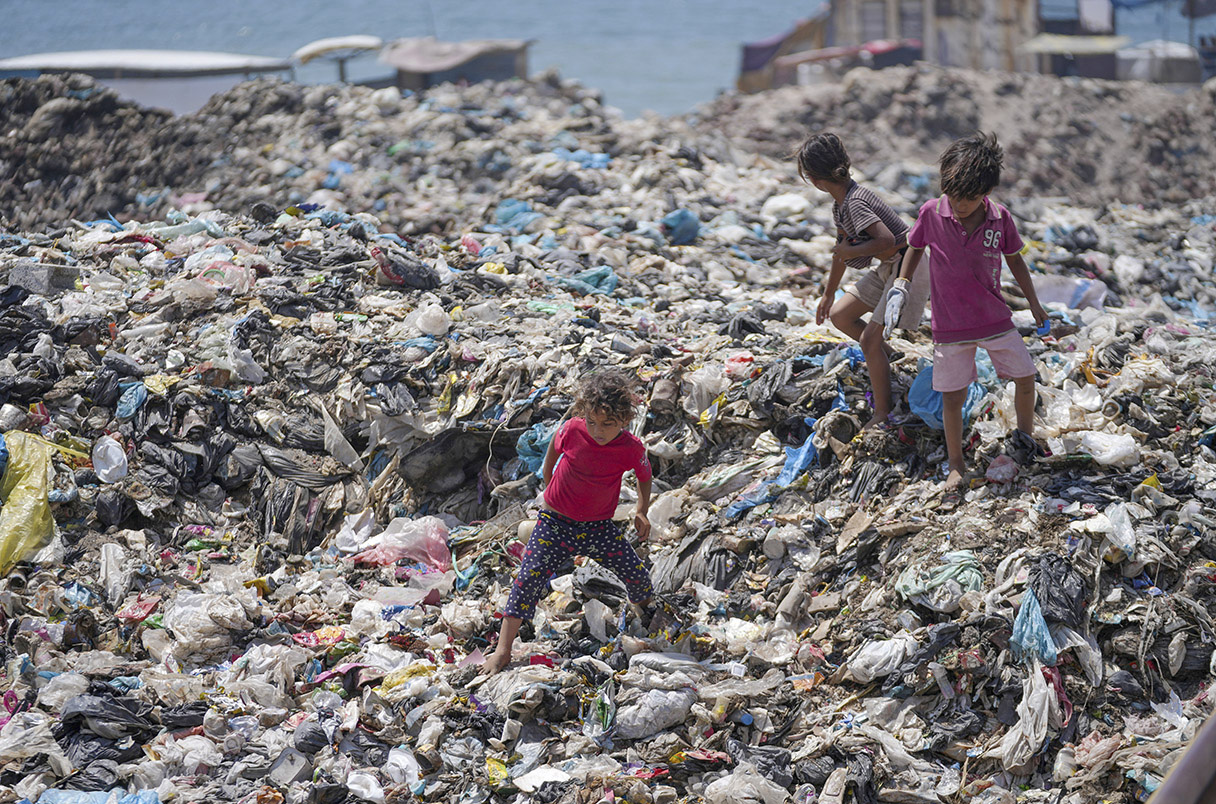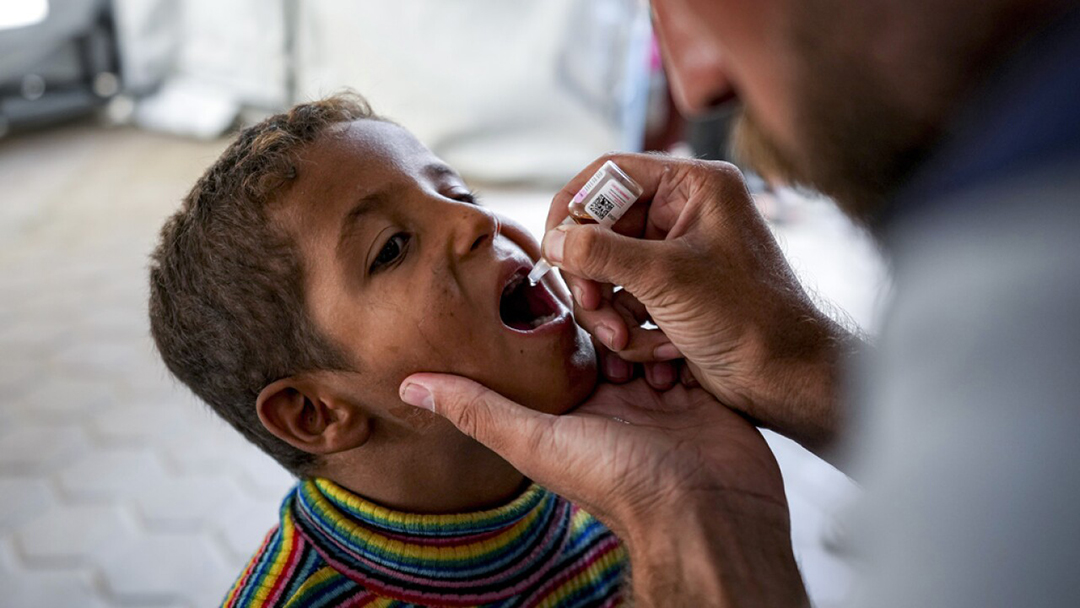Bringing the latest developments in Gaza’s polio outbreak, the challenges of vaccinating 640,000 children, and the international response needed to prevent a crisis. Learn about the origins, transmission, and global implications.
In the ravaged strip of Gaza, already battered by years of conflict and blockade, the resurgence of polio has added another layer of despair to an already dire humanitarian crisis. The World Health Organization (WHO) recently confirmed that Israel has agreed to limited humanitarian pauses in its military operations, allowing polio vaccines to be administered to children under the age of 10. This decision comes in response to Gaza’s first confirmed polio case in 25 years—a 10-month-old boy now facing a life marked by paralysis. But how did this ancient disease make its return, and what does it mean for the region?
Where did Polio Virus Come from in Gaza
Polio, a highly contagious virus, had not been seen in Gaza for a quarter of a century. The re-emergence of the disease in this besieged enclave has raised alarm bells across the global health community. While the exact origin of the current case is still under investigation, it’s believed that the virus may have been imported from a neighbouring region or introduced through travellers, as movement between Gaza and other regions has been historically porous, despite the ongoing blockade. In areas of conflict and displacement, where sanitation systems are overwhelmed, the conditions become ripe for the spread of such a virus.
However, there is a darker narrative that has begun to circulate among the population—a conspiracy theory that the polio virus was intentionally planted as a form of biological warfare. These rumors, while unsubstantiated, reflect the deep mistrust and fear that has taken root in a community that has long felt under siege. In a region where conflict and deprivation are daily realities, the idea that a disease might be deliberately unleashed is not easily dismissed by those who have suffered so much.

Concern of Polio in Israel
Israel, too, has not been immune to the threat of polio. In recent years, isolated cases of the virus have been detected, particularly among unvaccinated populations. However, due to robust vaccination campaigns, the spread has been largely contained. Israel has employed both the Inactivated Polio Vaccine (IPV) and the Oral Polio Vaccine (OPV) in its immunization efforts, the latter of which has been instrumental in controlling outbreaks in areas with poor sanitation, such as Gaza. The challenge now lies in ensuring that Gaza’s children receive these vaccines amid the chaos of war.
Polio Transmission
Polio is transmitted primarily through the fecal-oral route, often through contaminated water or food. In conflict zones like Gaza, where infrastructure is in ruins and basic sanitation is a luxury, the virus can spread rapidly. Children, especially those under five, are most vulnerable. The paralysis that struck the 10-month-old boy is a stark reminder of the disease’s potential to cause irreversible damage, and in some cases, death if the virus paralyzes the respiratory muscles.
The Humanitarian Aid & Response
With the stakes so high, the humanitarian community is scrambling to prevent a wider outbreak. The WHO, in coordination with UNICEF and other agencies, is leading the effort to vaccinate Gaza’s children. But this is no ordinary vaccination campaign. The health workers on the ground face immense challenges—from navigating bombed-out streets to reaching displaced populations crammed into overcrowded camps.

Photo by: Abdel Kareem Hana/AP
Ambitious Polio Vaccination Plan – 9 Days, 640,000 Children, 1.3 Million Doses
The plan is nothing short of ambitious: within nine days, health workers aim to vaccinate 640,000 children under the age of 10, delivering 1.3 million doses of the polio vaccine. This rapid-response campaign is crucial to preventing the spread of the virus in a densely populated area where public health infrastructure has been devastated. The campaign is set to operate under the temporary humanitarian pauses in fighting, but the window of opportunity is small, and the obstacles are numerous.
War Zone Healthcare Challenges
The logistical hurdles are enormous. The U.N. estimates that approximately 65% of Gaza’s road network has been destroyed or severely damaged due to ongoing military operations. This has not only isolated communities but also hampered the movement of humanitarian convoys. Aid groups have had to suspend trips due to security concerns after convoys were targeted by the Israeli military. In such a volatile environment, ensuring the safe delivery of vaccines is fraught with danger.
Moreover, the ability to maintain cold chains necessary for storing the polio vaccines is severely compromised. With electricity supplies limited and often non-existent in many areas, the risk of vaccine spoilage is high. These factors, combined with the ongoing conflict, have created a perfect storm of obstacles that could hinder the vaccination campaign and allow the virus to spread unchecked.
Will the World Respond?
As the world watches the situation in Gaza unfold, it’s clear that containing this polio outbreak requires more than just local efforts. The international community must step up, providing not only vaccines but also the financial and logistical support needed to reach every child in Gaza. The polio outbreak is a symptom of a much larger problem—a reminder that in times of conflict, the most vulnerable often suffer the most.
Crisis Of Global Neglect
In Gaza, where the war has destroyed more than just buildings, the fight against polio is symbolic of a broader struggle for dignity, health, and survival. And as the world’s attention shifts from one crisis to another, the children of Gaza are left to wonder: Will the world help them fight this battle, or will they be forgotten once again? The spectre of a deliberate release of the virus only heightens the urgency, adding a new layer of complexity to an already harrowing situation. Whether these fears are founded or not, they underscore the profound sense of insecurity and helplessness that pervades life in Gaza today.




